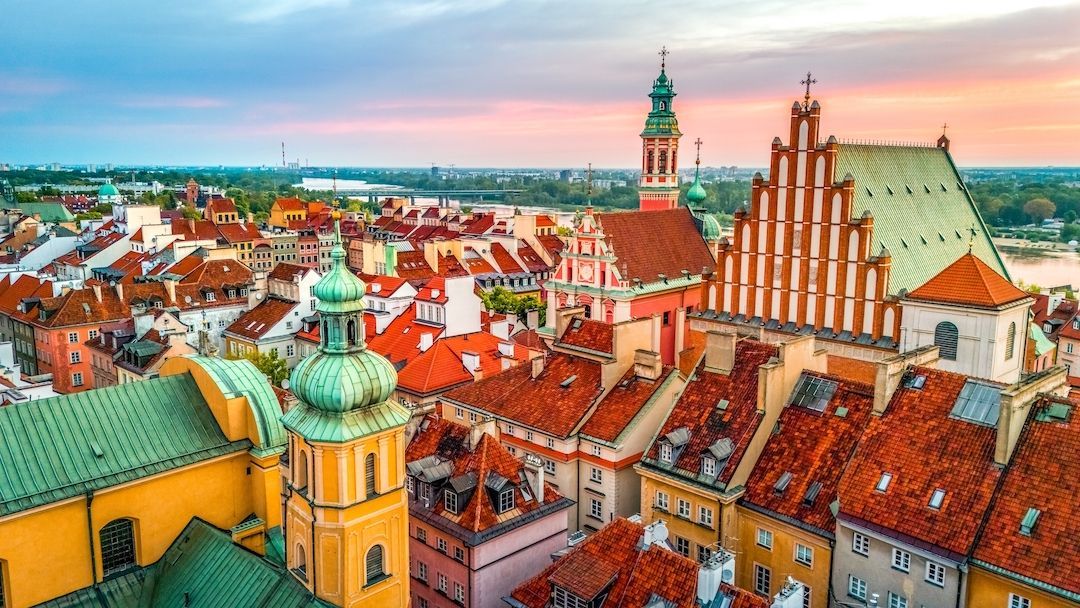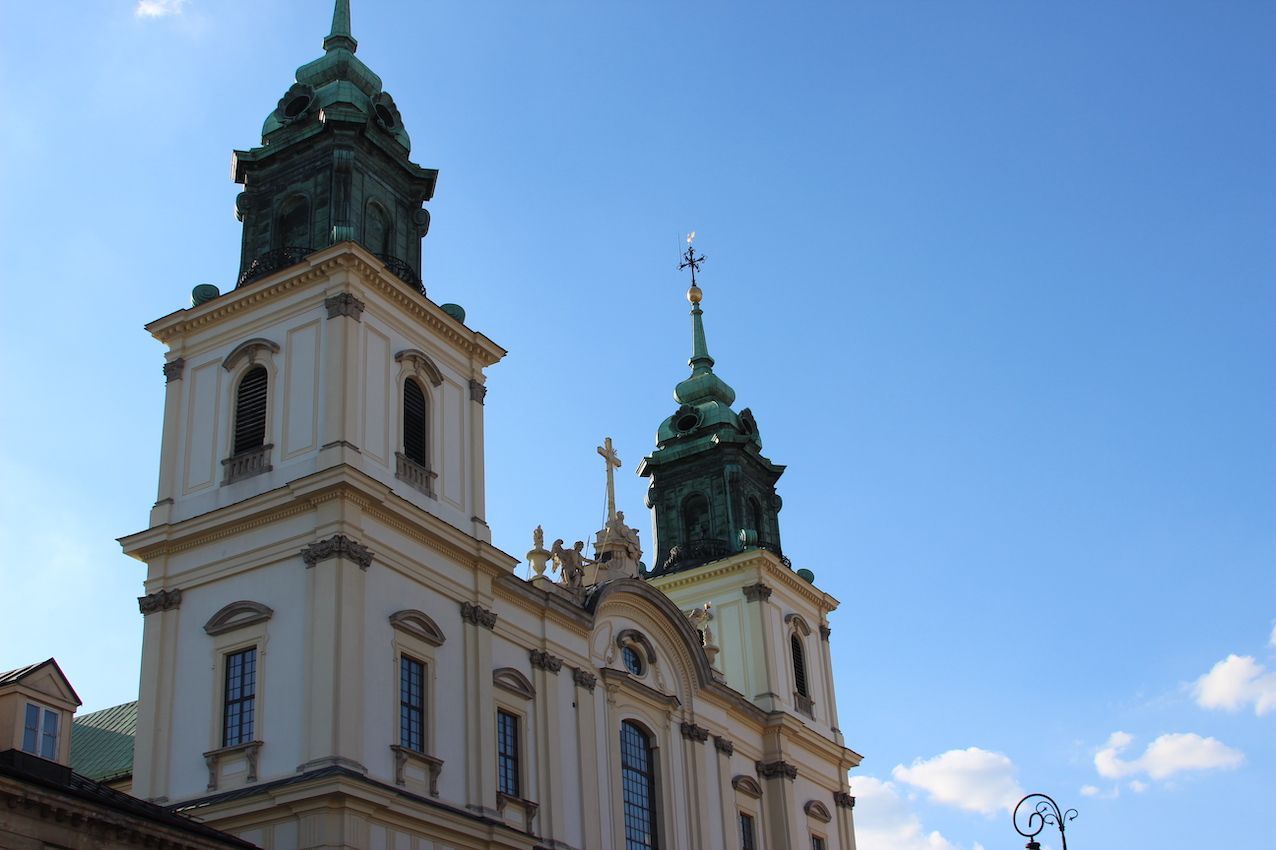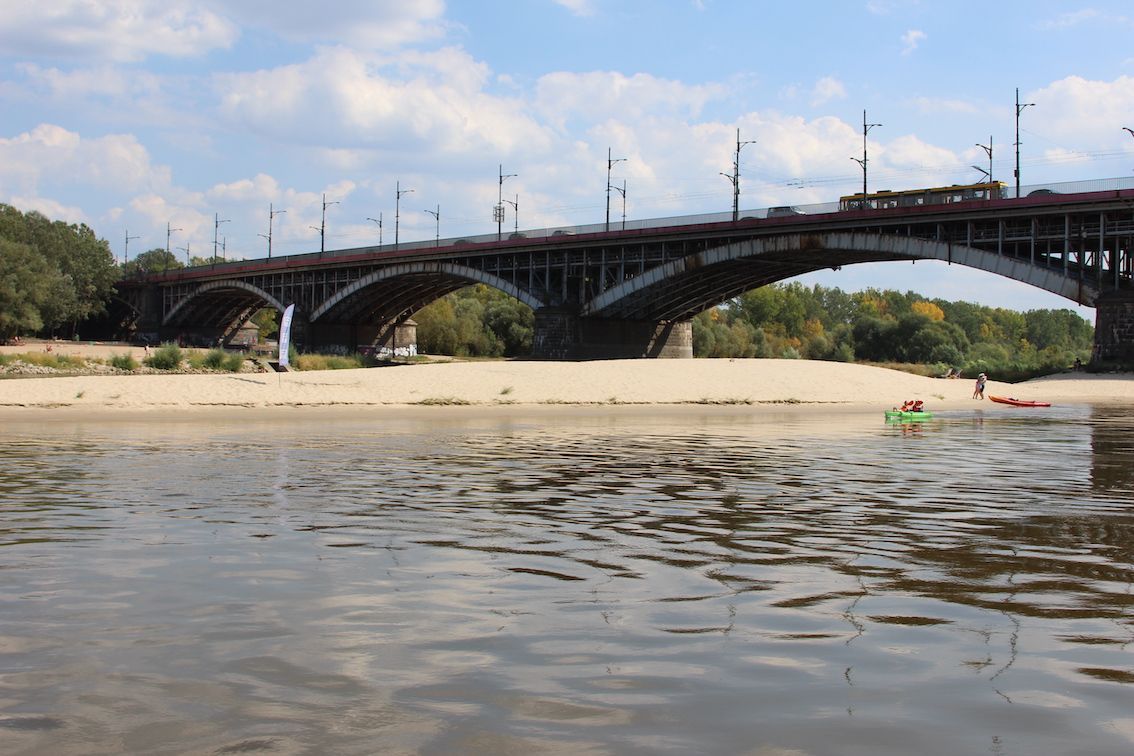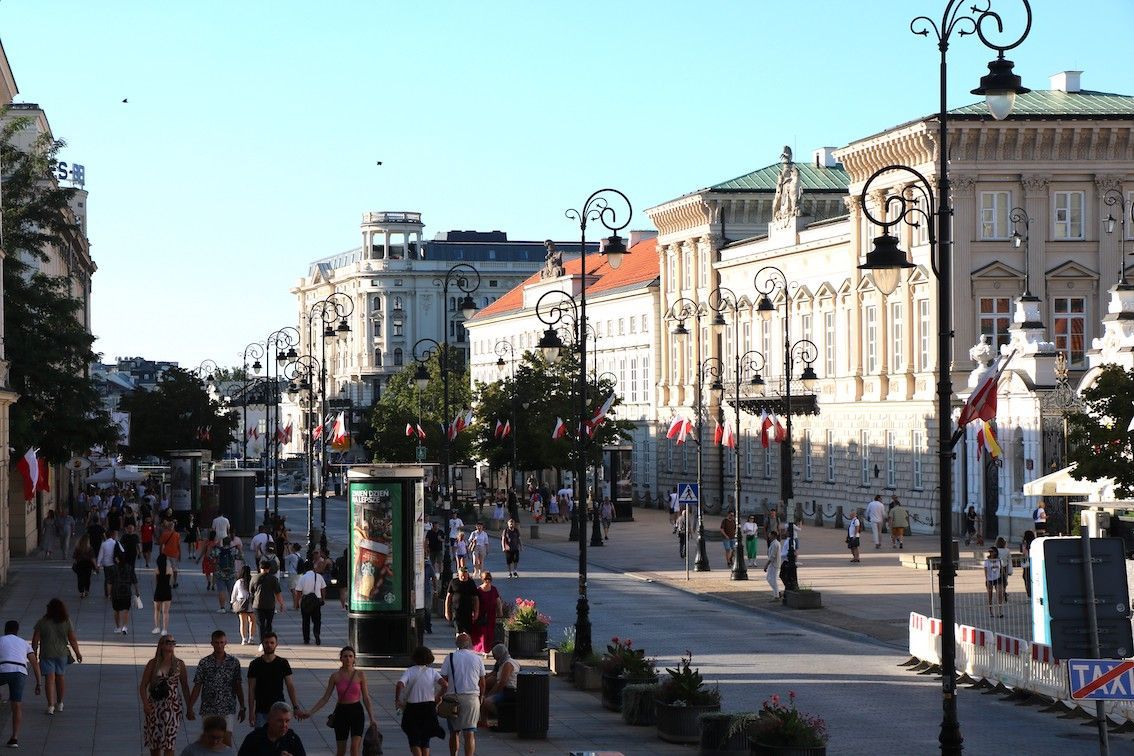
Warsaw - aerial view over Castle Square
From riverside walks, urban beaches and museums to musical benches, a glut of Michelin-starred restaurants and more history than you can handle, this metropolis is ideal for notching up experiences and creating new memories …..
Warsaw Weekend
by Gilly Pickup
I arrived that morning at the city’s Chopin Airport and from there it was only a twenty minute drive to the Hotel Indigo in the heart of the city. Its entrance is eye-catching – the focal point of the roofed inner courtyard is a massive cascading chandelier comprising around 900 coloured glass balls. Quite the conversation starter.
From my window I had a view of the 237m high Palace of Culture and Science, gifted to Warsaw by Stalin. Actually, its full title is the ‘Palace of Culture and Science in the name of Joseph Stalin’, but that’s a bit of a mouthful and you can’t blame anyone for not referring to it as such. These days, the ornate building houses concerts, bars, museums, cinema, theatres and a casino and until 2022 had the accolade of being the city’s tallest structure, until the nearby Varso Tower took that particular title. Apparently the Rolling Stones played at Stalin’s Palace of Culture in 1967; reports from back then say the event was a rabble-rousing affair and the band ‘rocked the Iron Curtain’. I can believe it.
However, there was no rock concert on my itinerary, instead it was something much more sobering. My history buff guide, walked me briskly along the pedestrianised Royal Route, talking of king this and nobleman that and now I was standing in front of a pillar in Warsaw’s Holy Cross Church where a plaque read, ‘Here rests the heart of Frederick Chopin’. The Polish musical genius died in France aged only 39 and his sister went to great lengths to smuggle his heart back to Warsaw in accordance with his wishes. Now it rests in an urn inside the pillar. Chopin is much revered here in his home country and during the summer his music is free to enjoy at open air Sunday concerts in Lazienki Park. As a boy, Frederic liked to walk down the Royal Route - so-called because of its three royal palaces - visiting friends and bookstores and now the area is marked by granite benches which play different Chopin compositions when you press a button.
Chopin aside, the underrated Polish capital is an exhilarating city, constantly evolving and you don’t have to scratch far beneath the surface to discover modernity and history sitting side by side. Most of Warsaw was flattened during World War 11 but locals built it back from the rubble brick by brick, something today’s residents are very proud of.
A late lunch beckoned so it was off to Syrena Irena bistro, located in an early 1950s building in the town centre and famed for its traditional pierogi dumplings. They come with a range of fillings - potato, cheese, quark, meat, sauerkraut, mushrooms and fruits. The restaurant’s colourful, cheery interior defies the nostalgic menu which includes classic Polish dishes from the 50s and 60s, things like sour rye soup and herring in flax oil, though updated for modern tastes including vegetarians like me. Perhaps that shouldn’t be a surprise, as three years in a row Warsaw has been in the Top Ten world’s most vegan friendly cities list and has 19 Michelin-starred restaurants.
The river Vistula flows through the capital, although until recently has been largely ignored. From a short river cruise it was clear that making the most of this natural resource is still work in progress, though a couple of urban beaches were popular with people sunning themselves. On summer evenings it now attracts locals while riverside boulevards are popular with cyclists, skateboarders or those enjoying a leisurely stroll. The river’s right bank is a Natura 2000 area, a special conservation area and natural habitat for breeding bird species threatened with extinction.
A visit to Warsaw University Library was on the cards, this place practiced living architecture before it became fashionable. Its rooftop garden offering panoramic views is fabulous, a mass of flowers, shrubs, footbridges and paths. Open from April until the end of October, it is well worth a visit.
Warsaw has several interesting museums, but I only had time to visit one during my visit. There was no question which my guide would opt for and why we spent several hours in the Warsaw Rising Museum. Housed in a former tram station, the museum delves into the history of the city’s doomed though brave uprising in 1944 via film archives, interactive displays and swathes of personal accounts. It is enormously popular with all ages.
Warsaw has plenty for visitors to see and do and there’s no need to worry about the language, English is spoken almost everywhere and English menus are always available. It is a welcoming city, only a short flight away. Do give it a visit, you won’t regret it.
For more information see www.go2warsaw.pl




